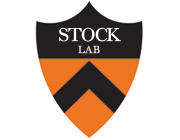Genetic analysis of response regulator activation in bacterial chemotaxis suggests an intermolecular mechanism.
Publication Year
2002
Type
Journal Article
Abstract
Response regulator proteins of two-component systems are usually activated by phosphorylation. The phosphorylated response regulator protein CheY-P mediates the chemotaxis response in Escherichia coli. We performed random mutagenesis and selected CheY mutants that are constitutively active in the absence of phosphorylation. Although a single amino acid substitution can lead to constitutive activation, no single DNA base change can effect such a transition. Numerous different sets of mutations that activate in synergy were selected in several different combinations. These mutations were all located on the side of CheY defined by alpha4, beta5, alpha5, and alpha1. Our findings argue against the two-state hypothesis for response regulator activation. We propose an alternative intermolecular mechanism that involves a dynamic interplay between response regulators and their effector targets.
Keywords
Models, Molecular,
Protein Structure, Tertiary,
phosphorylation,
chemotaxis,
Bacterial Proteins,
signal transduction,
Mutation,
Escherichia coli,
Mutagenesis,
Membrane Proteins,
Amino Acid Substitution,
Amino Acid Sequence,
Escherichia coli Proteins,
Sequence Alignment,
Methyl-Accepting Chemotaxis Proteins
Journal
Protein Sci
Volume
11
Issue
11
Pages
2644-54
Date Published
11/2002
ISSN Number
0961-8368
Alternate Journal
Protein Sci.
PMID
12381847

